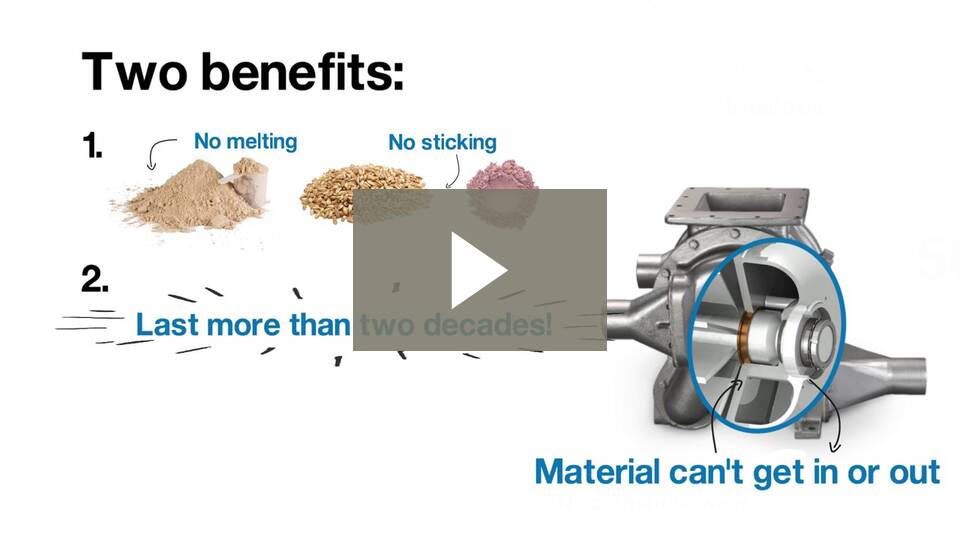Avoid sticky situations with a rotary airlock feeder

Imagine a hot fudge sundae covered in syrup and topped with maraschino cherries. That is pretty much the perfect case for heaps of sticky, creamy sugar on a hot summer day.
Before we lose you to an ice cream truck, let’s get on topic: melty sugar is great in a sundae, but it’s destructive to rotary valves. Sugar and similar dense, sticky substances — from flour to wallboard slurry materials — are notoriously tough on rotors and endplates. They melt more easily, which makes them build up on the internal housing and cause premature wear.
Manufacturers often choose traditional blow-through valves for their simple, efficient operation method, but these don’t hold up against the sticky and abrasive materials we mentioned. ACS Valves specifically developed the Aero-Flow™ valve to tackle all these challenges head-on.
Feed the beast
The Aero-Flow is a rotary feeder specifically designed for dense materials, such as fine powders used in chemicals, fine mineral powders, food and bakery processing, and milling. It excels at highly efficient, air-assisted material induction into pneumatic conveying systems.
It’s not called a feeder because you put food in it, although we have done that before (and do not recommend it). While they still belong to the same family as rotary airlock valves, feeders maintain a pressure differential in metering and feeding applications. The pressurized air mixes with material and seals key entry points against leaks.
Here's how the Aero-Flow works:

How flow can you go?
Here’s why the Aero-Flow feeder works so well. Its dual-induction design introduces pressurized air from two inlet manifolds into the endplates and rotor pockets, mixing your process material with air as it enters the feeder.
Because your material is constantly aerated, it stays in solid form, so it has no chance to melt or stick to your housing and rotor. The 50/50 mix of air and high-bulk-density material helps it release much more easily from the rotor pockets, making it overall more efficient to convey.
Go with the Aero-Flow
Besides improved conveying efficiency, consistency and material fluidization speed, a big advantage of the Aero-Flow lies in its longevity. Air pressurizes the seal and bearing area of the rotary feeder, which prevents material from getting in or leaking out. As a result, seals and bearings last much longer – in some cases, more than two decades.
The Aero-Flow’s dual-induction design also optimizes energy consumption compared to conventional, single-induction feeders. For an added kick to energy efficiency, get a variable frequency drive. As the performance needs of your system fluctuate, the drive will modulate the feeder’s drive speed and reduce its power requirements.
The rotary feeder’s 10-vane rotor features beveled vane tips and sides. The outlet size can be customized, and multiple other configurations are available to make it fit your process needs.
Ready to see some specs? Read all about the Aero-Flow feeder here or contact an ACS representative to see if it can benefit your gypsum slurry operations.
